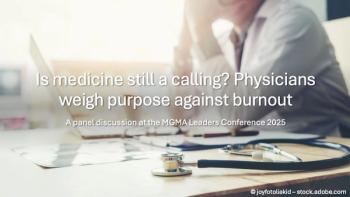
Drilling Down on the Female-Male Pay Disparity among PAs
Female PAs make 86 percent of what their male counterparts earn, a recent study found. This is profoundly unfair.
As a physician assistant (PA), and as a man in what was a male dominated profession at the beginning of my career, I didn't give a lot of thought to the issue of pay inequality in my profession. I have always cared about pay inequality as a societal issue.
Many factors have been discussed over the years about how and why gender pay inequality exists. Some of the reasons given by observers have been centered on the differences between genders and their different wants, needs and preferences. Such as:
• Family demands on women.
• That women tend to work more part-time hours.
• Women tend to dominate in lower paying jobs.
• Women don't participate in the workforce to the same extent that men do.
There is no doubt that some or all of these factors contributed to wage disparity. However, we have a different society now and a different demographic in the medical professions. This is very true of the PA profession.
The PA profession was "male-dominated" (and military centric) in the initial years. This was the case during my training in 1981-82. Contrast that with 2016,
The PA profession has had a rich database of information on the profession that has been collected and enhanced over many years. Researchers have been very interested in how gender affects PA compensation, and have been studying this information for years. In a
All aspects and factors which could be expected to account for some differences in pay between men and women where carefully reviewed and controlled for in an attempt to get at the "actual" wage disparity.
The conclusion that the researchers came to, even when compensation-relevant factors such as years of experience as a PA, hours worked, specialty, training, region, and call hours were controlled, there remains a significant difference in total compensation of male and female PAs.
Even though the pay gap in the PA profession has decreased since the 1990s, female PAs make 86 percent of what male PAs make.
Why is this important? Simply, because it is unfair to the majority of the PA profession, and it is unfair to one-half of the population. One could argue that maybe male PAs are "overpaid," but that doesn't hold water when you look at the significant economic impact that PAs have on practices, institutions, and healthcare settings in the United States. Instead, it's clear female PAs are underpaid.
The basic premise that people should be compensated equally, for equal work just makes sense. There are a lot of societal and community factors that have shaped how we value and compensation work among men and women in our communities. The authors of this study made some important policy recommendations after looking at the data which could be significant for both PAs and physicians. In a second part of this blog, I will look at those policy recommendations, and comment on them from the perspective of a PA who has been in the field for nearly 37 years.
Newsletter
Optimize your practice with the Physicians Practice newsletter, offering management pearls, leadership tips, and business strategies tailored for practice administrators and physicians of any specialty.







